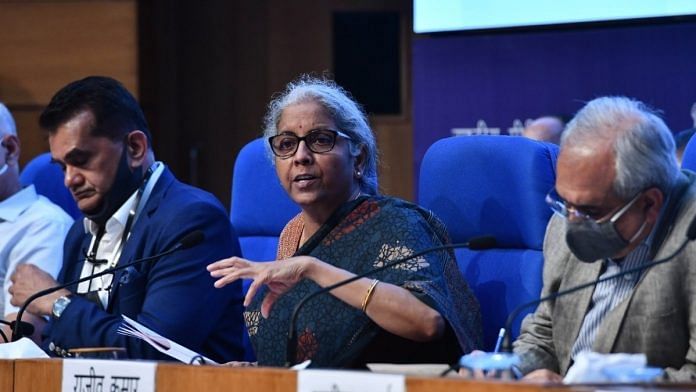Every politician vehemently opposes disinvestment of national assets when he or she is in the opposition, and conveniently forgets it when in power. Government should not be in the business of business is another adage that has been in vogue since Independence. But seldom do we see governments trying to find an amicable solution or hear out experts.
The Narendra Modi government’s latest major economic announcement was about setting up the National Monetisation Pipeline (NMP) as a Special Purpose Vehicle (SVP) through which brownfield infrastructure assets built over the last seven decades will be gradually sold in the next four to five years to the private sector. The government’s quest for additional revenue seems to be driven by the funding required for new infrastructure projects.
The announcement is likely to be received with a huge amount of scepticism mainly because those less initiated in economics will view the monetisation as the opposite of demonetisation, which was followed by the rollout of GST and the onset of the pandemic. It has played havoc with the common Indian’s family budget. Unlike the government, the daily wage earner and the salaried class cannot resort to deficit financing or monetisation of assets.
Ideally, there should be no objection to the process of monetising national assets, which is one of the easiest and sure methods for governments to enhance their revenue. It is no secret that there is a severe resource crunch, notwithstanding the finance ministry’s claims that GST collection has increased, and the economy is ‘beginning to shine’ after the year-long pandemic pangs.
While the prospects of the Indian economy improving can be a subject of debate, the NMP proposal raises certain apprehensions and calls for greater clarity and transparency. There is little doubt that revenue is needed for infrastructure, but liquidating brownfield national assets built over decades to spend on non-revenue earning projects does not seem to be an encouraging proposal. There is ample experience, interest and willingness on the part of the Indian private sector to enter into infrastructure-creating ventures. All that the companies need is level playing field, zero bureaucratic intervention and easy credit flow. Should it be very difficult for this government to provide these?
Also read: Govt expects Rs 1.6 lakh cr from monetising 104 NHs by 2025 despite lukewarm investor interest
Being transparent on revenue inflow and outflow
There are fears, and certainly not unfounded to say the least, that the asset sale revenue might be used in full or partially towards repayment of loans, debt servicing or bailing public sector banks out of the NPA muddle to clean their balance sheets. This will seriously erode the confidence of citizens in the banking system. Besides, sincere and hardworking companies among the business community will lose whatever little incentive they have to do clean business. The Modi government should assure citizens that no part of the monetised revenue will be used to bail out NPAs or build white elephants mainly intended to mollify vote banks or to cater to identity politics.
To begin with, as part of an honest and responsible government, the Niti Aayog and/or the finance ministry can come out with a white paper on the proposed NMP, explain the proposed revenue avenues, outflows and also provide a roadmap of new asset creation. It would be interesting to know how much of the revenue earned out of the assets sold off so far in the last four-five years has gone into creating new assets, with a revenue-to-assets proportion breakup. Asset valuation and tendering process are other areas that require the government to be highly transparent so as to not attract criticism of promoting crony capitalism, private monopoly and below-par valuation, especially of the brownfield projects that are risk-free and high-revenue earning.
Also read: What is the best asset monetisation plan? Modi govt can learn important lessons from Australia
Intent, content and methodology
The government has assured that no family silver is being sold. Contrary to normal privatisation processes, the National Monetisation Pipeline envisages monetisation without transfer of asset ownership and mandatory hand-back of assets after a certain period. The ‘buyer’ (not a very correct word here) or the private participant will not be able to show the asset in their balance sheet but only create a notional carry forward revenue stream. This may create issues of credit and investment for private players. Will a prospective buyer be able to use the asset as collateral to raise funds from the market or investor pool?
The Private-Public Partnership (PPP) model that is envisaged is not glitch-free and needs to be made foolproof before making it standard practice. For example, the power grid, National Highway Authority of India, or the airport PPP models are not so successful and require serious re-appraisal before they are made into a template for other proposed projects. Meanwhile, it would be a good idea to wait till the privatisation of the national carrier Air India, which seems to be hitting new roadblocks or seeing rather strong headwinds every year. Also, if the proposed NMP asset monetisation process is promising to be a game-changer, why not include Air India sale in this route of privatisation?
In all, one hopes that the government will do further homework on the intent, content and methodology of its ambitious NMP before rolling it out.
Seshadri Chari is the former editor of ‘Organiser’. Views are personal.
(Edited by Neera Majumdar)



